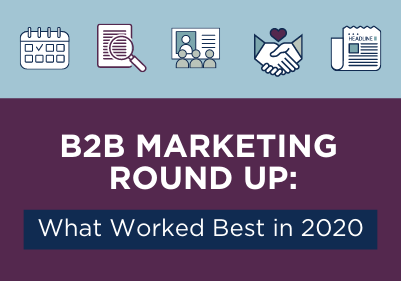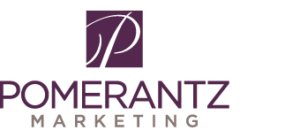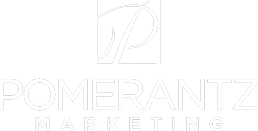B2B Marketing Round Up: What Worked Best in 2020
 Despite the desire many of us still feel to burn sage every day to ward off the bad energy from 2020, many of our clients were able to hunker down and still make their numbers in an unprecedented year of insanity. As we venture into the first quarter of 2021, we thought it would be worth sharing a brief round up of what worked best in B2B marketing in 2020 from our agency’s perspective.
Despite the desire many of us still feel to burn sage every day to ward off the bad energy from 2020, many of our clients were able to hunker down and still make their numbers in an unprecedented year of insanity. As we venture into the first quarter of 2021, we thought it would be worth sharing a brief round up of what worked best in B2B marketing in 2020 from our agency’s perspective.
Let’s do it.
#1: Embrace the Quarterly Marketing Plan
Forget trying to figure out a detailed marketing plan for 6 to 12 months. Instead, take it one quarter at a time. Define your objectives. Focus your messaging. Align your tactics and your website. Monitor and measure results. And, keep a running wish list of what else you’d like to be doing. Towards the end of each quarter, evaluate your outcomes and your wish list and then rinse and repeat for the next quarter.
Today’s times require flexibility and adaptability. Sure, you can have annual objectives. Just prioritize them into quarterly-sized pieces. Then revisit them each quarter because they may change.
#2: Make Customer Case Studies Timely & Relevant
Here’s something to consider: your pre-pandemic customer case studies may no longer be relevant (or as relevant). It’s sad but true. But here’s the thing, you don’t necessarily have to start over from scratch. We recommend assessing your case studies and determining if you have certain customers that particularly benefitted during the last year from having your solution(s) in place.
If so, conduct a follow-up interview with them and ask strategic questions that help you get some quality timely, relevant insights. Then, update the case study and put it to work for you on your website, social media, collateral, videos, webinars, etc. Our clients found prospects to be hungry for timely, relevant case studies.
#3: Lose the Attitude About Webinars
In the early lockdown days, people in the B2B world were sitting on webinars for hours each day trying to figure out how to deal with the world turning on its axis. Webinar burnout was intense. But then, when things calmed down over the summer and fall, webinars started to become truly effective for lead generation.
Hands down, the best type of webinar involved timely, relevant case studies, where a client co-presented with one of their customers in telling the story of how having their solution in place gave them an edge when things went to hell in a hand basket. Also, promoting webinars to outside audiences via vertical sponsorships instead of home-grown prospect lists proved to be more fruitful in terms of driving webinar registrants (this is likely because most companies suck at managing their prospect databases).
#4: Reach New Audiences with Sponsorships
Trade shows and conferences as we know them went kaput in 2020 and, of course, this was a big blow in the B2B realm because so many companies rely on these for brand awareness and lead generation. From our perspective, very few organizations have found a way to make virtual conferences worth the investment (plus, the prices are just ridiculous). Savvy (and often smaller) trade/industry organizations have crafted sponsorships that enable you to reach their memberships and audiences in very targeted ways, including sponsored blog and social posts, involvement in their online communities, articles or ads in their e-newsletters/emails and webinars. Several of our clients have had great lead generation success co-presenting timely, relevant case study-focused webinars with their customers to a niche industry organization. The best case scenario is to co-present with a customer that is already involved with the organization, so you can ride on their coattails.
#5: Get Your Name Out There with Article Placements
Many of our clients are small to mid-size technology, security, cybersecurity and construction companies. They’re competing against big-name national players. While lead generation is crucial for them, so is growing their brand awareness and credibility in the marketplace. One of the most effective ways to do this is with article placements. This involves continuous media outreach to targeted industry publications and websites and pitching thought leadership topics for articles.
To be successful, though, it really does require professionals who know what they’re doing and have connections. The results are worth it when you have a steady stream of editorial articles, quoted mentions, bylined contributed pieces and customer stories that you can spotlight on your website and leverage for social media and SEO. This is an angle we worked hard in 2020 and found great success with for our clients.



